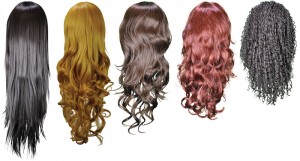For some, curly hair is a blessing. For others, it is a curse. Researchers at the Massachusetts Institute of Technology have gone beyond a genetic explanation of different hair types, using computer models to explain the physics of curly hair.
The researchers demonstrated that curly hair takes the form of a naturally curved, clamped rod when it hangs suspended. On a microscopic level, curly hair consists of numerous distinct helical configurations — all 3D structures that can form angles and move in infinite directions. These helices allow the strands of hair to compress themselves into tight rotations that do not fall flat. In contrast, straight hair falls limp under its own weight due to a 2D hook structure that limits hair motion to forward, backward, and side-to-side movements only.

Tips of curly hair tend to be the curliest because of the force that gravity imposes on the rest of the hair. A trait most observable in people with long curly hair is that the top portion of the hair near the scalp is often straighter because it bears the weight of the rest of the hair. The remaining portion of the hair maintains its curly shape because it has little weight exerted on it.
